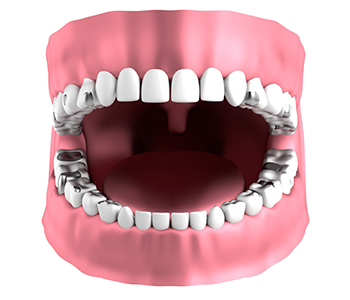Biological dentist in Wrentham explains about symptoms of mercury toxicity
Wouldn’t you like your smile to radiate health and vitality? That is the impression that strong white teeth present. Yet millions of Americans have dark, silver-colored fillings, and some dentists are still using amalgam. Potential problems arising from amalgam go far beyond aesthetics. Dr. Rawat, a biological dentist serving health-conscious patients in the Wrentham area, talks about mercury toxicity and explains symptoms.

How amalgam is made
Dental amalgam is a metallic compound. It gets its color from silver, but that metal comprises only about 25 percent of the product. As much as 50 percent is elemental mercury, with the remainder being small amounts of tin, copper, and sometimes zinc or other metals.
Mercury is a potent neurotoxin. How potent? The EPA (Environmental Protection Agency) outlines 13 steps and nine specific items necessary to safely clean up mercury spilled from a broken thermometer. So, why would we put this dangerous substance in a dental product?
The other metals in amalgam are fine particles with irregular shapes that do not stick together. The addition of liquid mercury (“quicksilver”) binds the elements, creating a malleable alloy, something like a thick paste, that that is compressed into the opening in a tooth left by a cavity. No binding agent is needed since it hardens when exposed to air, and the dentist can easily shape the filling with normal dental instruments. The bottom line is that placing an amalgam filling requires less precision and takes less time than alternative materials, making it cost-effective for the dentist.
How mercury from amalgam may enter the body
Dental amalgam is approved by the FDA. The long-standing belief is that mercury becomes inert, sealed within the other components of amalgam, and thus poses no health threat. Is that truly the case?
At room temperature, elemental mercury is a liquid. Chemical, biological, and mechanical processes transform it into other forms, including vapor. While mercury toxicity can be absorbed through the skin or via the lining of the stomach when ingested, inhalation poses the most significant hazard. About 80 percent of mercury vapor inhaled by humans enters the circulatory system, delivering poison throughout the body.
How can mercury vapor escape from an amalgam filling? Friction – resistance from one object rubbing against another. Friction from one tooth contacting another occurs every time you bite down, chew, or grind and clench at night. It happens when you brush your teeth. It takes place when a dentist drills into amalgam. The patient with amalgam fillings is potentially exposed to inhaled mercury vapor 24/7/365.
Dentist in Wrentham explains about symptoms of mercury toxicity
Selenoenzymes are antioxidants, helping your body counteract cellular damage. Brain tissue is especially susceptible to oxidative cell damage. Mercury exposure inhibits the function of selenoenzymes, depleting natural defenses. Because the body does not have a good mechanism to flush mercury, it bioaccumulates, building up in tissues over a lifetime. The result can be severe and lasting dysfunction of brain cells.
 Symptoms of chronic mercury poisoning include a variety of personality changes, cognitive impairments, and sensory and motor disturbances. Common symptoms are:
Symptoms of chronic mercury poisoning include a variety of personality changes, cognitive impairments, and sensory and motor disturbances. Common symptoms are:
- Elevated heart rate.
- Headaches.
- High blood pressure.
- Increased salivation.
- Insomnia.
- Irritability, moodiness, excessive shyness, nervousness, and lack of self-confidence.
- Itching, burning sensation in skin.
- Light sensitivity.
- Loss of hair, nails, or teeth.
- Loss of sensation in hands, slowed motor function, and impaired coordination.
- Memory loss.
- Muscular weakness, twitching, or atrophy.
- Problems with mental focus and concentration.
- Profuse sweating.
- Redness of the cheeks, nose, and lips.
- Skin rash.
- Tremors – shaking of the hands, sometimes spreading to other areas of the body.
By discontinuing exposure and through focused chelation therapies, some of the toxic effects of mercury can be reversed. However, long-term exposure may result in irreversible kidney damage. A mother’s exposure to mercury crosses the placenta and may affect a child’s health and intelligence for life.
Beautiful alternatives
Dr. Rawat has good news, even if your only concern with amalgam is appearance. He and his team are trained in the IAOMT’s stringent protocol for safe removal of amalgam. Advanced Dental Practices offers composite resin fillings. This strong, durable material is made of BPA-safe plastic with natural light-reflecting qualities. Larger cavities can be repaired with porcelain inlays, onlays, and crowns. These options are metal-free for an aesthetically beautiful smile, with no risk of metal reactivity, galvanism, toxicity, or allergy.
Call (508) 456-7111 to become Dr. Rawat’s newest patient.














